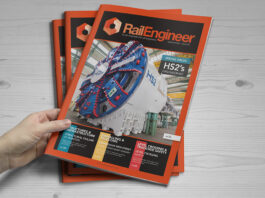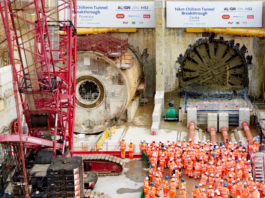Train Control & Management System (TCMS) is a train-borne distributed control system. It comprises computer devices and software, human-machine interfaces, digital and analogue input/ output (I/O) capability and the data networks to connect all these together in a secure and fault-resistant manner.
Typically, TCMS provides data communications interfaces to other train-borne systems, and also telecommunications to supporting systems operating remotely on the wayside. TCMS will usually be physically separated from WiFi networks available to passengers for security reasons. TCMS is often referred to as the “brain of the train” due to its central role in coordinating control and monitoring across disparate systems.
For large manufacturers, TCMS is the standard control, communication and train management system for all vehicle platforms and applications ranging from trams, metros, passenger coaches and people movers to multiple-car trains, high-performance locomotives, and high-speed trains. The precise TCMS architecture deployed will vary depending upon operational requirements and market segment, but the purpose and benefits of TCMS are common across all architectures.
TCMS easily integrates with third party subsystems because the design is modular and uses internationally standardised interfaces. It allows data from multiple systems to be intelligently integrated, providing services to drivers, maintainers and passengers which are enhanced in comparison to those available from standalone systems.
Standardisation of data interfaces between TCMS and other train systems benefits manufacturers, suppliers and, ultimately, fleet owners as it allows a broader range of compliant system solutions to be considered whilst reducing the cost of integration. In addition, migration of functionality from the supplier domain into TCMS can reduce the cost and complexity of the overall train solution, for example through the elimination of unnecessary cabling and connectors and their associated mass.
TCMS components
Computer Control Units (CCUs) will normally have no moving parts or internal batteries and their software can be updated remotely over the TCMS network, eliminating the need for costly routine maintenance or time- consuming device-by-device physical access. They offer a variety of interface ports: typically they support one or more Ethernet, Multifunction Vehicle Bus (MVB) and serial data interfaces.
As CCUs are programmable devices, the software they run may be based on either a deterministic real-time operating system which allows for predictable operational performance and control, or be based on a non-real-time operating system which will allow the integration of a wider variety of commercially available software libraries to deliver more complex but less critical functionality.
Human Machine Interfaces (HMIs) share the low- maintenance characteristics of CCUs, and typically provide a high-resolution, touch-screen programmable interface to relay information to drivers and maintainers. The programmable nature of these devices means they can be customised to suit developing operational circumstances, and can provide redundancy for other screen-based functionality that may be required in the driver’s cab.
Modular Input/Output (MIO) devices provide a flexible combination of digital and analogue I/O, allowing for future expansion and facilitating a wide variety of control and monitoring solutions.
Mobile Communication Gateways (MCGs) typically provide combined GSM-P, WiFi and GPS capabilities, driving down the cost of broad-reach telecommunications by using low-cost and high-bandwidth channels when possible, and making the train location available to both onboard and wayside services.
Safety-certified variants of CCUs, HMIs and MIOs can be used to deliver safety-critical functionality, building on these proven platforms to expedite the integration process.
TCMS Networks
The devices described above will be connected to one or more of the following networks, but the list is not exhaustive. Other field-bus technologies exist but are generally adopted from other industries such as automotive or building-control and are not the subject of standardisation for rail.
The Multifunctional Vehicle Bus (MVB) provides device connectivity within a consist, i.e. a set of vehicles which can be operated as a train independently. Depending on the number of devices, there may be multiple buses present within the consist. MVB is a managed serial protocol, often implemented on the RS485 physical layer.
An Ethernet Consist Network (ECN) is typically organised in a ring topology to provide redundant paths in the event of cable or switch failure. It provides an Internet Protocol (IP) interface to TCMS and other systems within a consist.
A Wired Train Bus (WTB) provides redundant connectivity between coupled consists, based on an RS485 physical layer, while Ethernet Train Buses (ETB), which are typically organised as redundant linear buses, provide IP connectivity between coupled consists.
TCMS Functions
One of the main benefits of TCMS is that it delivers an integrated diagnostic and prognostic capability on the train and provides visualisation of system performance, issues and suggested corrective actions to assist the driver and maintenance personnel. Diagnostic events and supporting data can be seamlessly transmitted to support personnel on the wayside, facilitating technical support to the driver, prompting timely maintenance interventions and providing an holistic view of fleet performance to ensure service disruptions can be anticipated and therefore minimised or eliminated.
Condition-based monitoring helps to reduce unnecessary scheduled maintenance and spares consumption, and prognostic analysis of current and historical data presented by TCMS to wayside systems can predict future system failures allowing planned corrective actions to be scheduled without service interruption.
Integration of data received by TCMS from unrelated systems can offer operational benefits and enhance passenger comfort. For example, passenger counting data gathered from external and gangway door sensors can be used by the Passenger Information System (PIS) to guide passengers to vehicles with low occupancy. Potentially, such information can be transmitted to wayside systems, allowing passengers waiting at stations to receive such information in advance of train arrival.
Vehicle functions such as Automatic Selective Door Operation, which ensures that the door release pattern along the train is appropriate to the platform length, can be enhanced by integration of data from multiple systems in order to support the driver. Location beacon data can be supplemented by GPS location and distance measurement data in order to identify potentially anomalous scenarios where the driver should confirm the current location of the train, and where some maintenance activity may be required. For example, if TCMS expects to receive beacon location information but does not do so when the location is known from GPS and distance measurement signals, this could indicate a failure with the beacon or the transceiver equipment, and TCMS can detect such scenarios automatically and thereby facilitate the resolution of off-train infrastructure issues which may impact operational safety.
A PIS is an example of a system where functionality can migrate from supplier systems into TCMS and the associated data can be utilised more widely. On Class 379 Stansted Express trains, delivered by Bombardier, the long-term, short-term and daily-running timetable and stock allocation plans are automatically downloaded from the wayside and PIS announcements are scheduled by TCMS. In addition, electronic seat reservation data is downloaded automatically (even in the event of stock reallocation), meaning that the PIS can set up automatically and passengers can locate reserved seats without requiring the driver to be in attendance.
Up-to-date timetable data is also made available to the driver via an electronic Driver Schedule Card presented via the HMI.
As functionality migrates onto TCMS equipment, reliability and availability can improve due to the reduction in train cabling and utilisation of built-in network and equipment redundancy. Whole-life costs can be reduced due to utilisation of a general-purpose control platform with a train-manufacturer-backed development roadmap and obsolescence management strategy.
Another example is the utilisation of the TCMS train- to-wayside telecommunications facilities for the transfer of non-TCMS data, such as CCTV footage retrieval, on-train data recorder logs, and passenger counts. It would theoretically be possible for each system with a data transfer need to implement an independent telecommunications strategy, but this would add significantly to the material and operational costs incurred, and replicate cyber-security attack vectors across each system.
An integrated on-board telecommunications strategy provided by TCMS also allows for greater integration on the wayside, allowing control room tools such as Bombardier’s Orbiflo to provide a harmonised approach to storing, accessing and utilising data retrieved from fleets. This reduces the training costs associated with a less integrated toolchain from multiple vendors.
Flexibility
The major benefit of TCMS is that it is flexible and adaptable to developing requirements. As functionality is generally delivered through software running on general-purpose controllers, updates to software can readily deliver new behaviours as operational experience develops or when new equipment is fitted to rolling stock.
Moreover, as software solutions specific to a TCMS platform will be re-used between fleets operated by multiple customers, selecting an established TCMS solution means individual customers benefit from incremental improvements in software quality as TCMS platform updates occur, which further improve reliability and availability.
As embedded computer processors become progressively more capable with reducing power consumption and thermal output, and as networking and telecommunications technology further develops and is adopted by the rail industry, the future for TCMS is very bright. It is inevitable that functionality will increasingly be realised in software, and the closer integration of system data provides opportunities for enhanced safety, reliability and availability and the delivery of new services to drivers, maintenance personnel and passengers with a reduced whole-life cost.
Simon Tew is the regional manager (Western Europe, Middle East & Africa) for networks and electronics in Bombardier Transportation, Derby, UK.
![Device - HMI [online]](https://rail.images.railuk.com/wp-content/uploads/Device-HMI-online.jpg)



